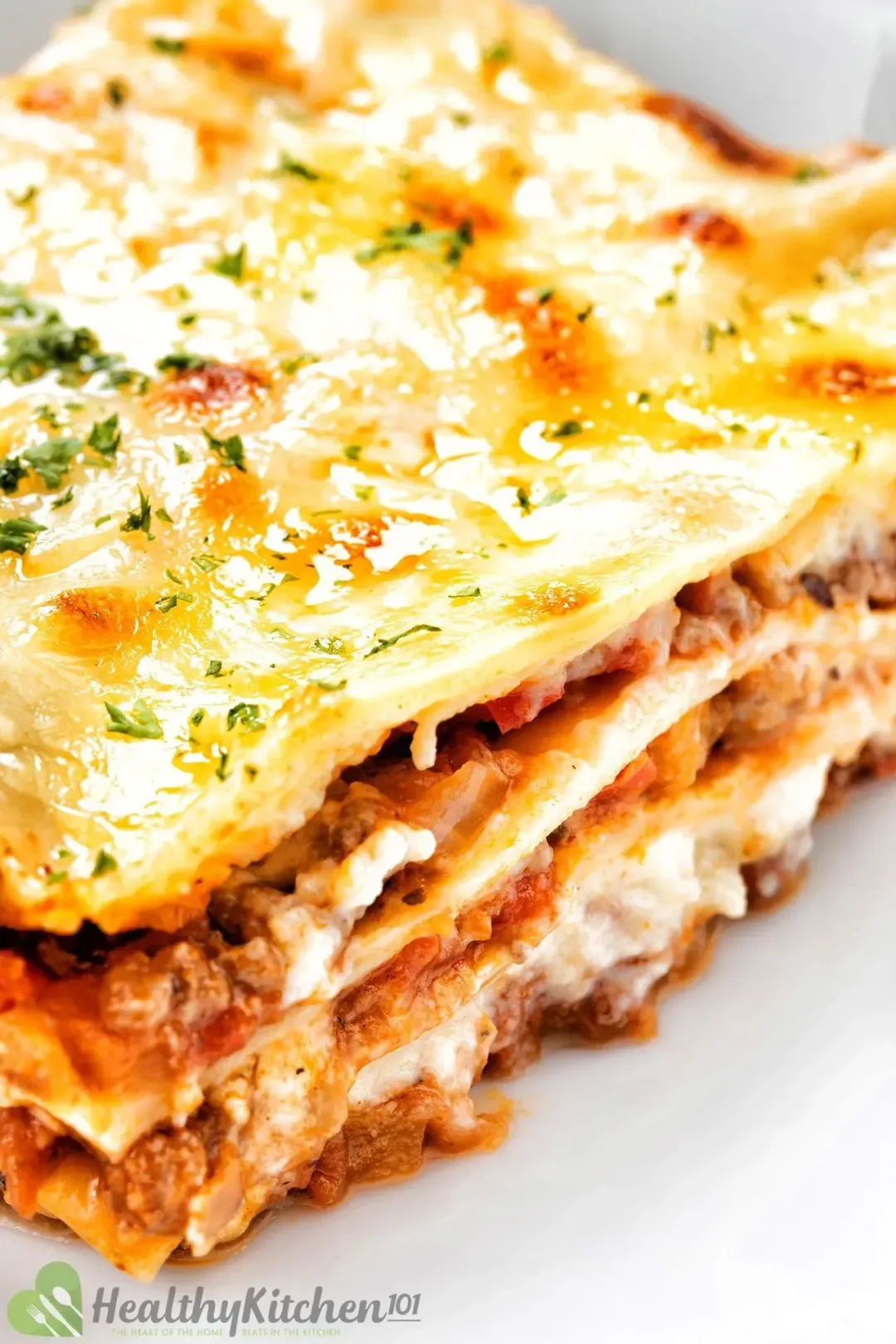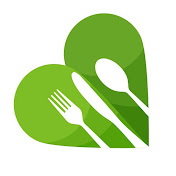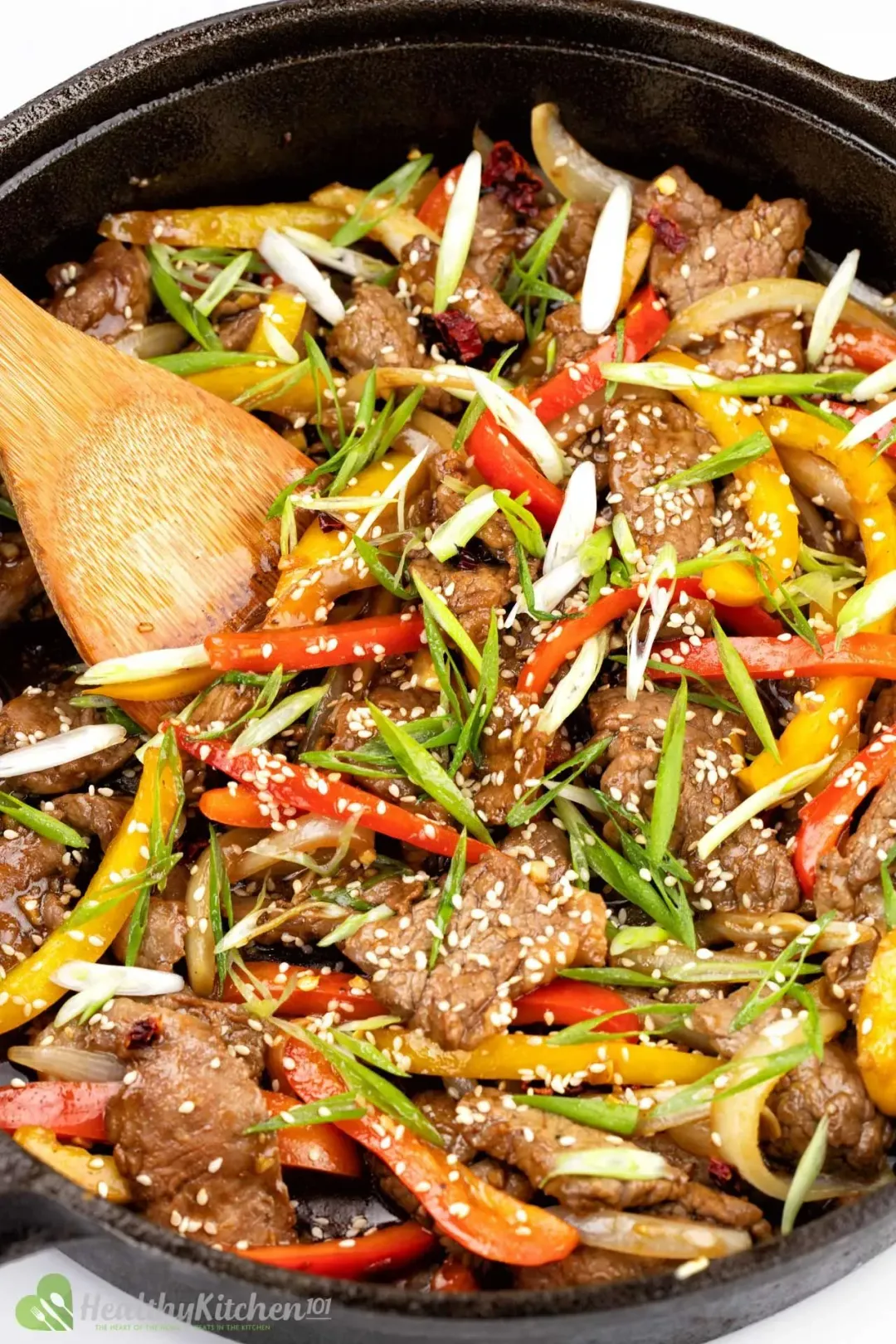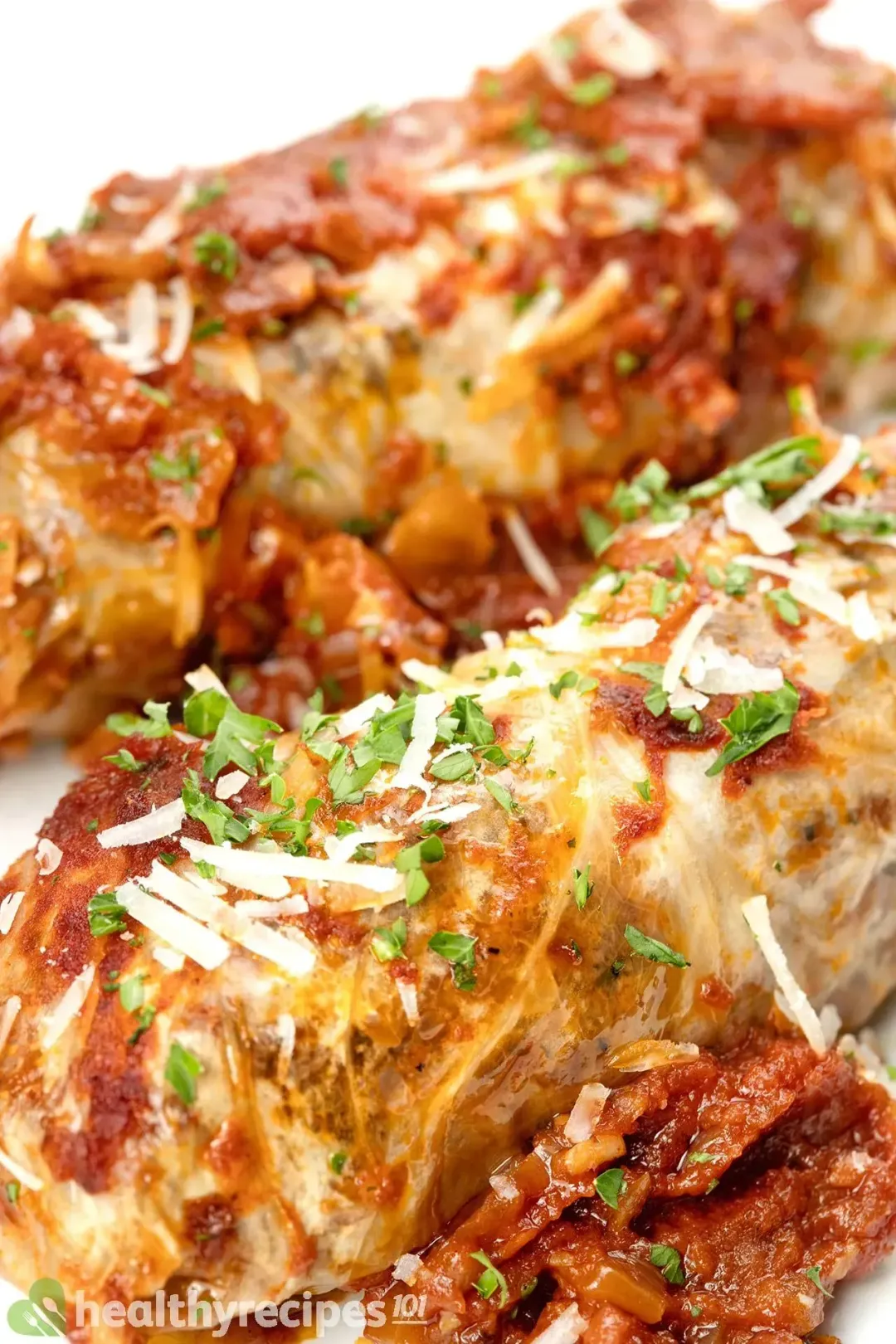This healthy lasagna recipe may not be authentic, but it still makes delicious, hearty, comforting pasta. If you’ve never had this iconic Italian dish before, here are some interesting facts you may want to know.
What Is Lasagna?
“Lasagna” is a type of pasta. This flat, thin sheet of pasta is made with wheat flour, egg, olive oil, and salt.
Lasagna is also the name of an Italian casserole dish. This dish consists of thin pasta sheets stacked on top of each other with layers of various fillings in between.
Fillings for this classic Italian pasta casserole are often meat-based sauces like Bolognese, vegetables, and different types of cheese. Popular variations of this pasta casserole also include a type of sauce called bechamel which we will explain more about in the “Sauces” section below.
Is This Recipe Healthy?
There’s often a misconception that this baked Italian casserole contains nothing but carbs and fat from all the dairy. We’re going to prove that it can be healthy, too.
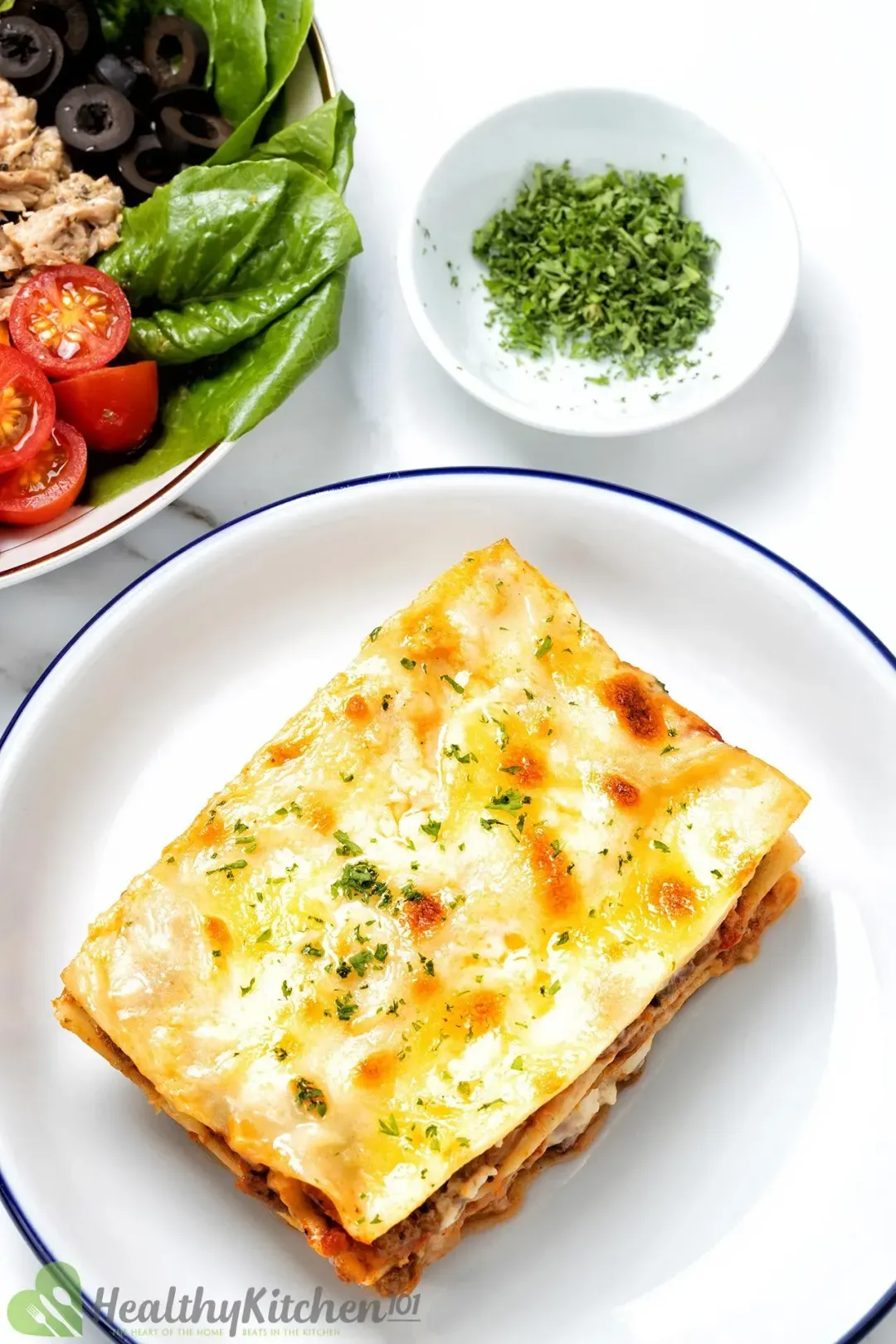
First of all, this recipe adheres to our healthy eating guidelines. This means it contains a reasonable amount of calories, saturated fat, and sodium.
We want to prevent overconsumption of saturated fat and sodium as it can affect your health dramatically. For example, excess sodium intake can increase your blood pressure and the risk of heart disease.
In addition, our serving of lasagna contains lots of vital nutrients and minerals such as vitamin A, C, K, etc. These micronutrients play an important role in maintaining a healthy immune system and brain function.
Main Ingredients
Here are the main ingredients for today’s lasagna recipe:
- Pasta: lasagna noodles. You can use the oven-ready lasagna sheets and skip the boiling process but we’ll stick to the regular type for this recipe.
- Water: to cook the pasta. You should preserve the pasta water to cook the Bolognese later.
- Main protein: lean ground beef.
- Seasonings: minced garlic, paprika, Italian seasoning, oregano, and garlic powder.
- Vegetables: onions, bell peppers, carrots, tomatoes.
- Condiments: tomato paste, tomato sauce, red wine,
- Spices: sugar, salt, and ground black pepper.
- Dairy: unsalted butter, whole milk, parmesan, and mozzarella cheese
- Herb: parsley, for garnish.
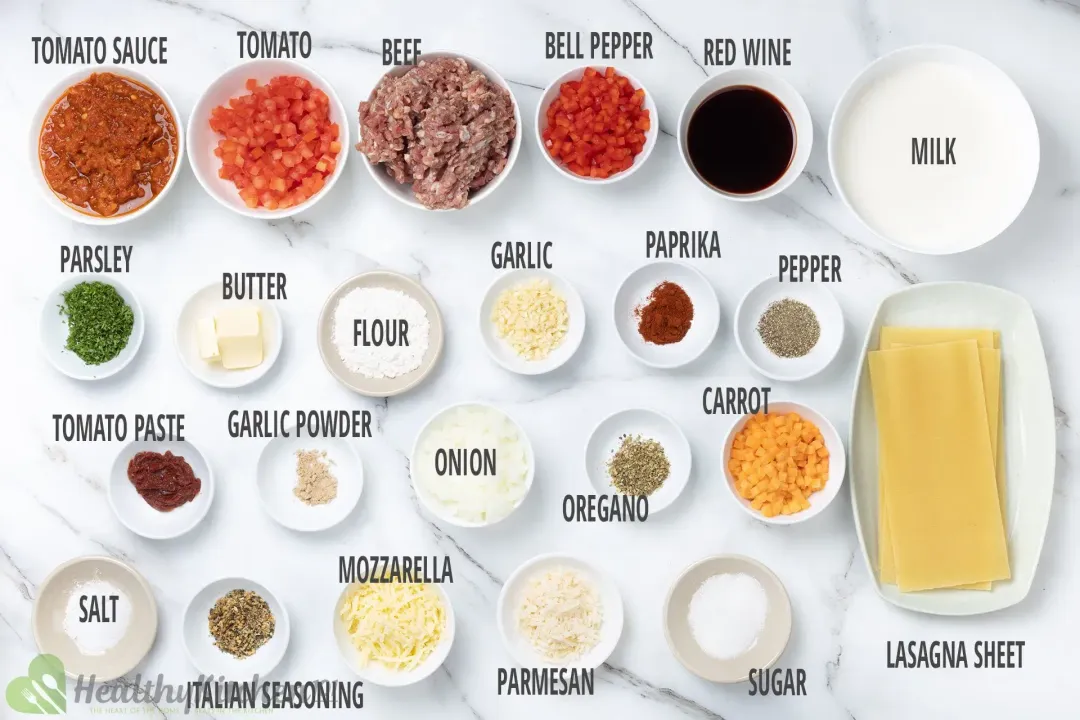
Sauces
As mentioned, there are two types of common sauces that go into this Italian pasta casserole: Bolognese and white sauce.
1. Bolognese Sauce
Bolognese is a type of meat-based tomato sauce. This fresh, tangy, flavorful sauce is packed with tomatoes, vegetables, ground meat, and all sorts of seasonings.
2. Bechamel Sauce (White Sauce)
Bechamel sauce, also known as white sauce, is a type of roux-based sauce. It is commonly made by whisking butter and flour with milk.
Seasonings for white sauce are simple, being just salt and pepper. Freshly ground nutmeg is sometimes added to the sauce to give it an extra rich flavor.
Although both sauces have different flavor profiles, when put in lasagna, they complement each other. Rich, creamy, fresh, tangy, and savory they create a burst of flavors in every bite. Our Cauliflower Lasagna Recipe is an excellent example of this.
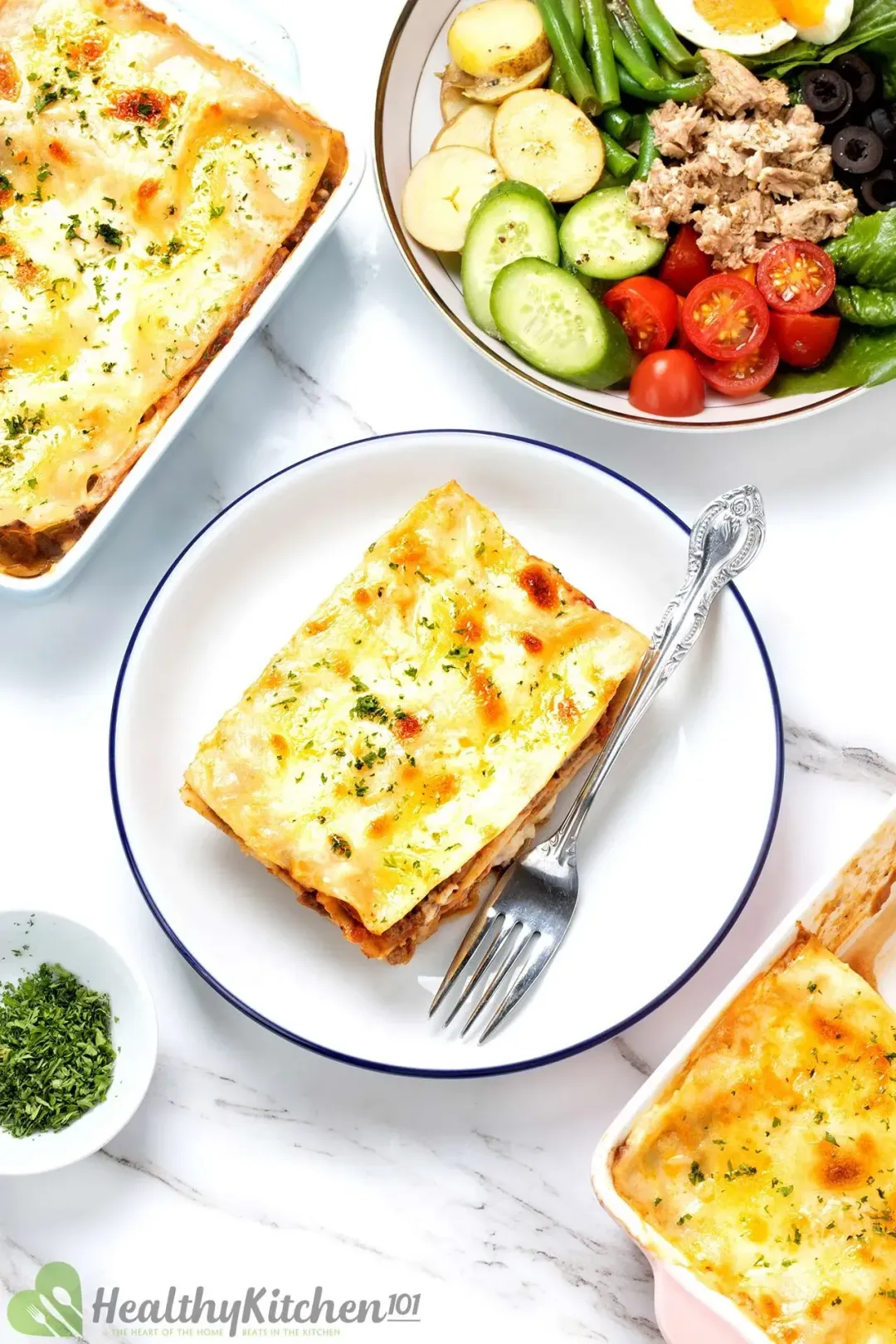
What to Serve with
Lasagna can be served as is or accompanied by an appetizer or a side dish. Here are a few simple options for you to consider.
1. Salad
Our Italian pasta casserole is already a nutritious dish on its own, but it still doesn’t contain enough fiber. We recommend serving with a side of salad to up the fiber intake.
A simple salad loaded with fresh vegetables and a tangy dressing will liven up your taste buds to enhance the overall experience.
2. Meal Plan
For today’s meal plan, we suggest pairing lasagna with our Nicoise salad.
This salad is full of protein and fibrous vegetables. Along with the baked pasta, this protein-rich, high-in-fiber meal can help you maintain muscle and stay full for a long time.
How to Freeze and Reheat
Lasagna freezes well and can last up to one month in the freezer.
It would be best to divide the leftovers into serving portions before placing them in freezer-safe containers. This will allow you to take one serving out of the freezer and thaw it with ease.
You can defrost the pasta slowly in the fridge overnight or in the microwave for a few minutes.
Reheating is also simple. All you need to do is place it in the microwave and it will be ready in minutes.
Keep in mind that once thawed, the pasta will have a slightly different, rather mushy, texture. However, texture aside, the flavors remain, and it will still be thoroughly enjoyable.
In case you are now craving more healthy casserole, our top delicious casserole roundup is a lovely option.
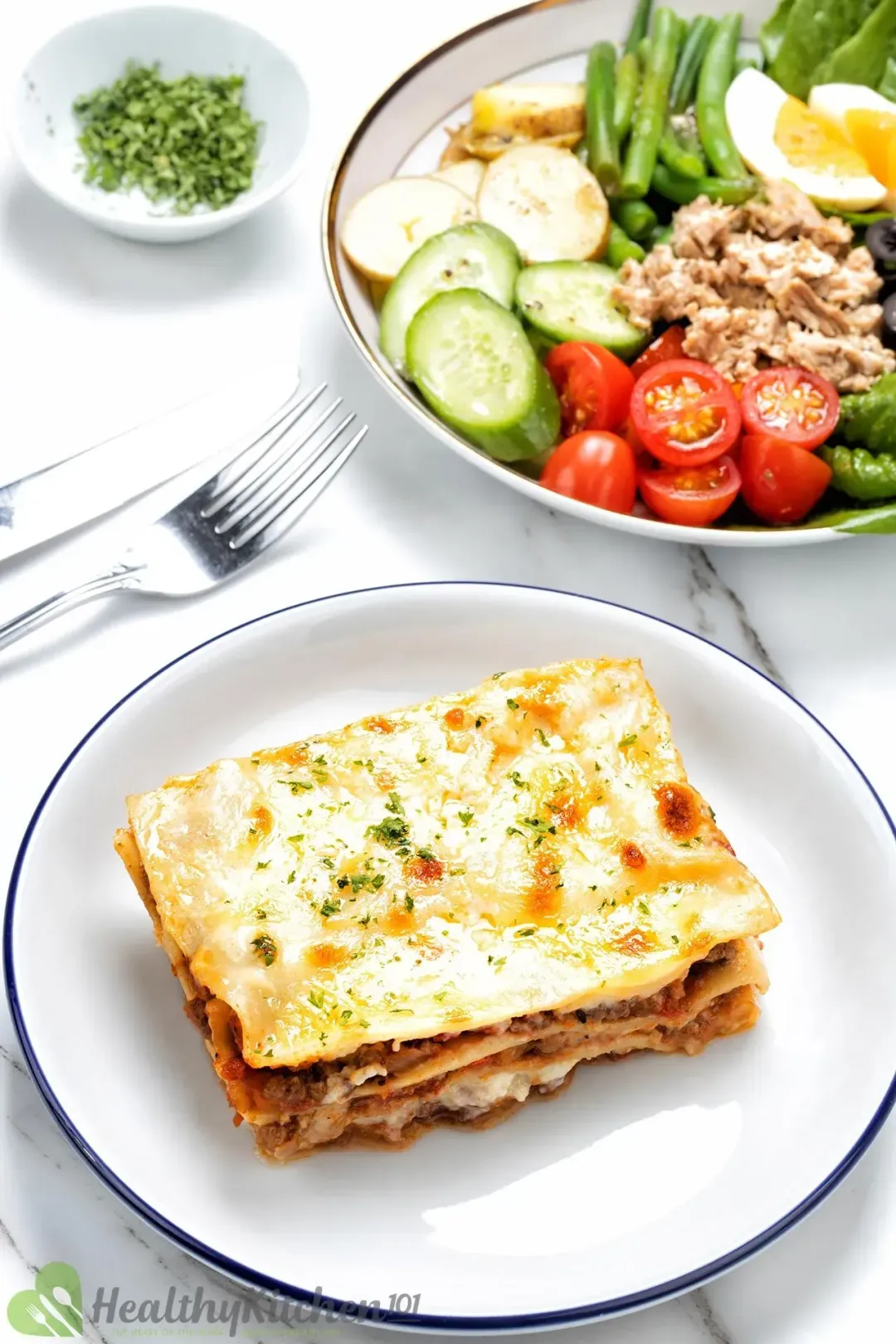
How Long Does It Last?
If stored properly, your pasta casserole will last for up to 5 days in the refrigerator.
We recommend letting any leftovers cool completely before placing them in airtight containers and the fridge.
If you put the warm pasta in the container too early, it releases steam which is trapped inside the container. This creates an ideal, moist, and warm environment for bacteria to grow and spoil the food.
It’s best to let the pasta come to room temperature, but no longer than 2 hours after cooking. The longer you leave the food out, the more bacteria will grow and affect the food.
Expand Your Pasta Palate with These Mouth-Watering Beef Dishes
Take your taste buds on a trip to Asia with these flavorful beef noodles. Thinly sliced beef is marinated in soy sauce, ginger, and garlic before being stir-fried with vegetables and noodles in a savory sauce.
This spaghetti bolognese recipe is a classic Italian dish with a twist. Made with ground beef, tomatoes, herbs, and spices, it's a hearty and flavorful meal that's perfect for any occasion.
If you're a fan of tasty beef pasta recipes, then you're in luck! Check out this roundup of ours for even more delicious options.
Lasagna Recipe
This lasagna recipe may require lots of ingredients, time, and dedication, but we guarantee all your efforts will be rewarded.
- cook TIME 1 hr 5 mins
- prep TIME 10 mins
- total TIME 1 hr 30 mins
- INACTIVE TIME 15 mins
- COURSE Dinner, Lunch, Main Course
- CUISINE Italian
- SERVINGS servings
- CALORIES 494 kcal
INGREDIENTS
- 10 oz 97% lean ground beef
- 6 lasagna sheets
- 6 cups water (to cook the lasagna)
- 4 oz tomatoes (deseeded and finely chopped)
- 3 oz onions (diced)
- 3 oz bell pepper (deseeded, diced)
- 0.5 oz Hunt's tomato paste (about ½ tbsp)
- 2 oz carrots (finely diced)
- 1 1/4 cup homemade tomato sauce
- 1/4 cup red wine
- 2 tbsp unsalted butter
- 2 tbsp all-purpose flour
- 1 3/4 cup whole milk
- 0.5 oz parmesan cheese (grated)
- 1 oz mozzarella cheese (shredded)
- 3 tsp garlic (minced)
- 1 tsp paprika
- 1/2 tbsp Italian seasoning
- 1 tsp oregano (dried)
- 1/4 tsp garlic powder
- 1/2 tsp ground black pepper
- 1 1/2 tsp sugar
- 1/2 tsp salt (divided)
- 2 tbsp parsley (finely chopped)
INSTRUCTIONS
Boil the lasagna: In a large pot or deep pan, fill it with water and bring to a boil. Add 6 lasagna sheets and cook for half the time on the packet. (Ours cooked for 4 minutes.) Once finished, drain the lasagna but don’t throw away the pasta water. Preserve 1 1/2 cup of this water to make the bolognese sauce.
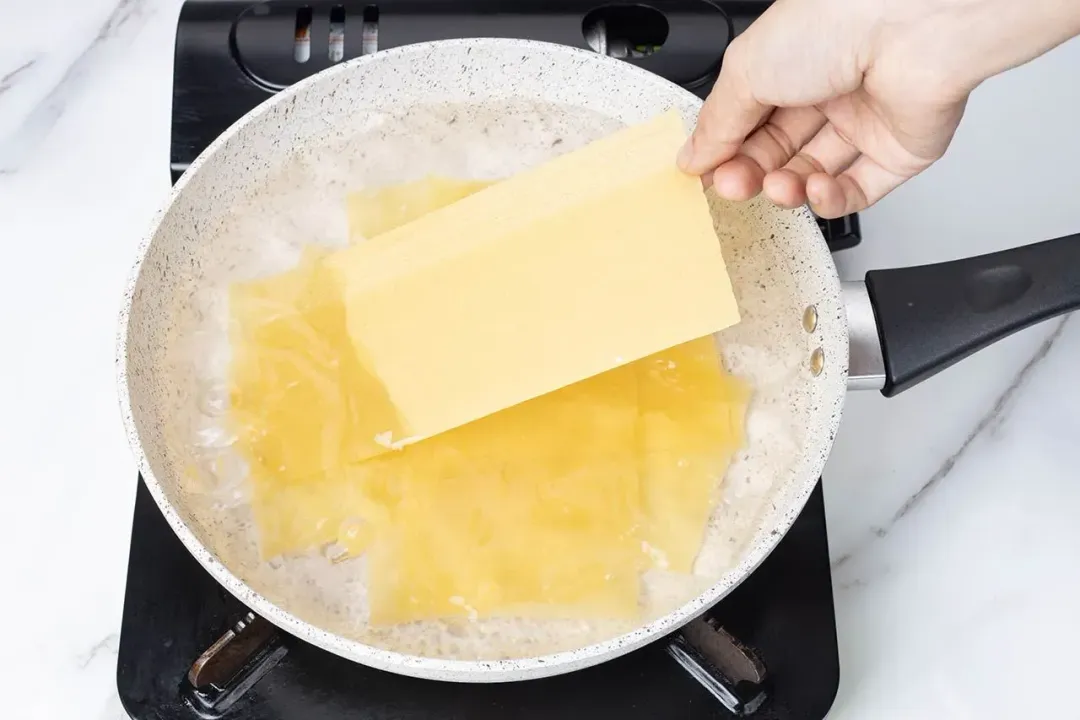
Sauté the beef: In a dry medium saucepan, add 10 oz ground beef and sauté over medium heat for 5 minutes.
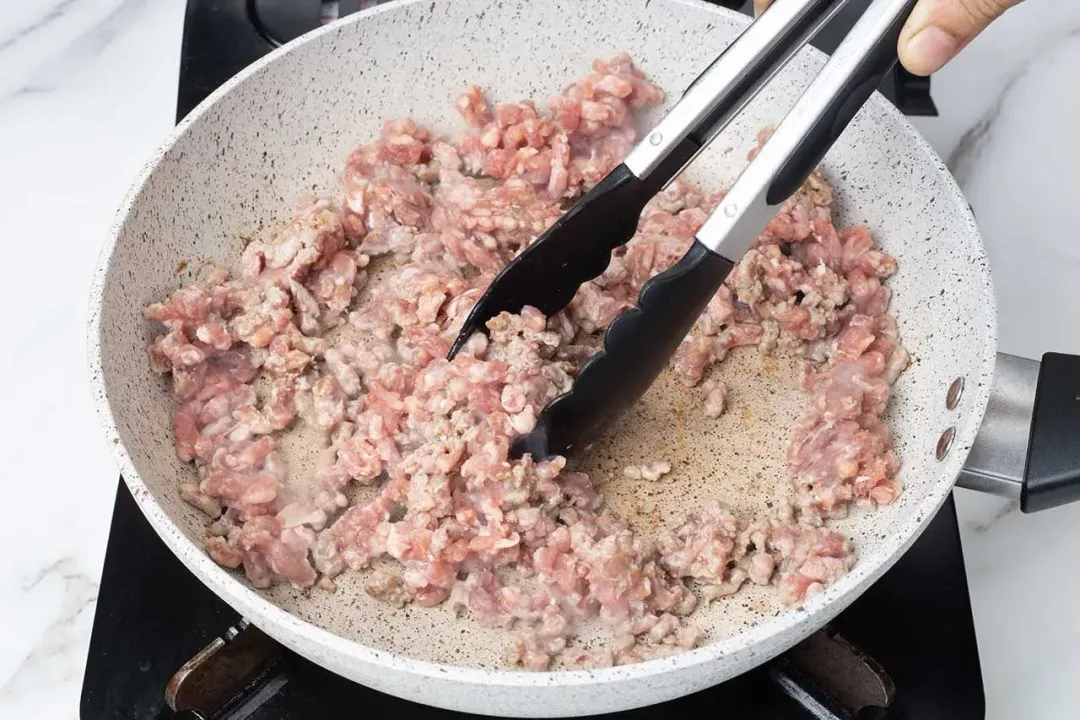
Cook the seasonings: In the same saucepan, add 3 tsp minced garlic, 1 tsp paprika, 1/2 tbsp Italian seasoning, 1 tsp dried oregano, 1/4 tsp garlic powder, 1/2 tsp ground black pepper, 0.5 oz tomato paste. Stir for 1 minute to “wake” the spices.
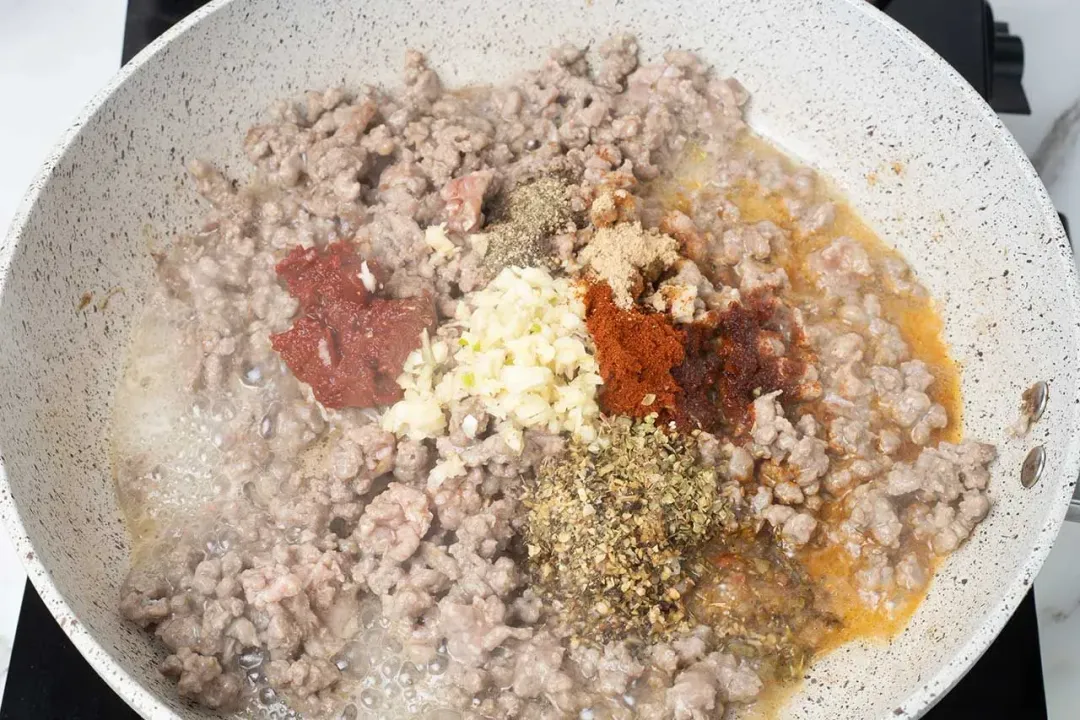
Sauté the vegetables: Add the 3 oz onions, 3 oz bell peppers, 2 oz carrots, and 4 oz chopped tomatoes to the saucepan. Continue cooking over medium heat for 5 minutes.
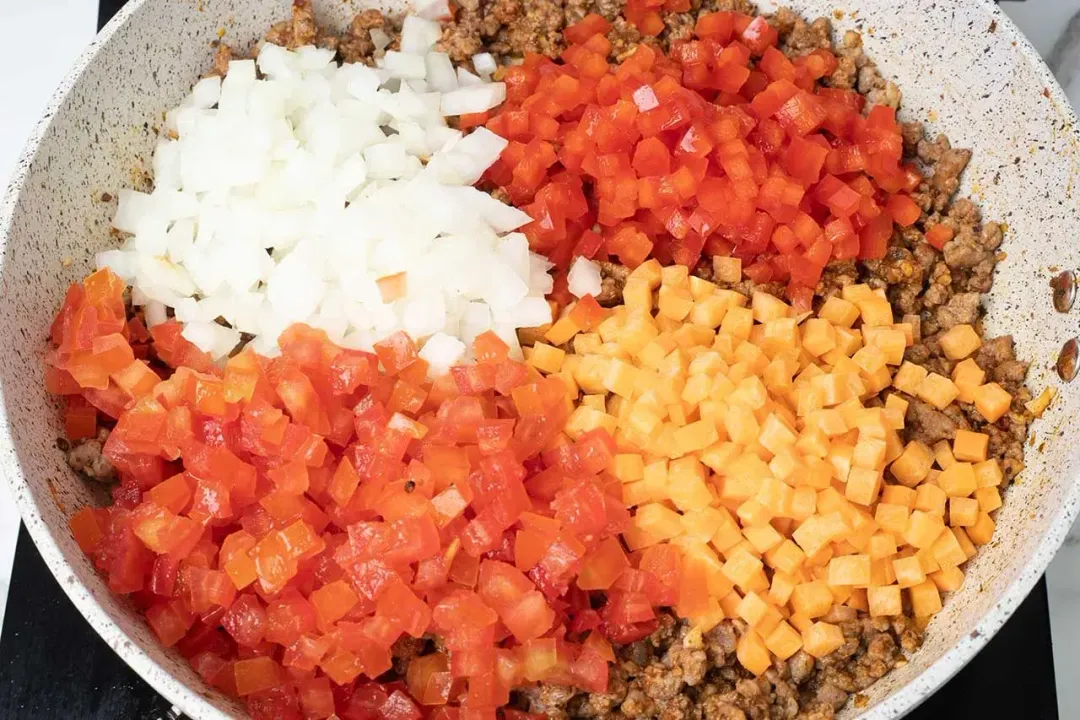
Deglaze the pan: Add 1/4 cup red wine, 1 1/4 cup tomato sauce, 1 1/2 tsp sugar, and 1/4 tsp salt. Stir and scrape the bottom of the saucepan.
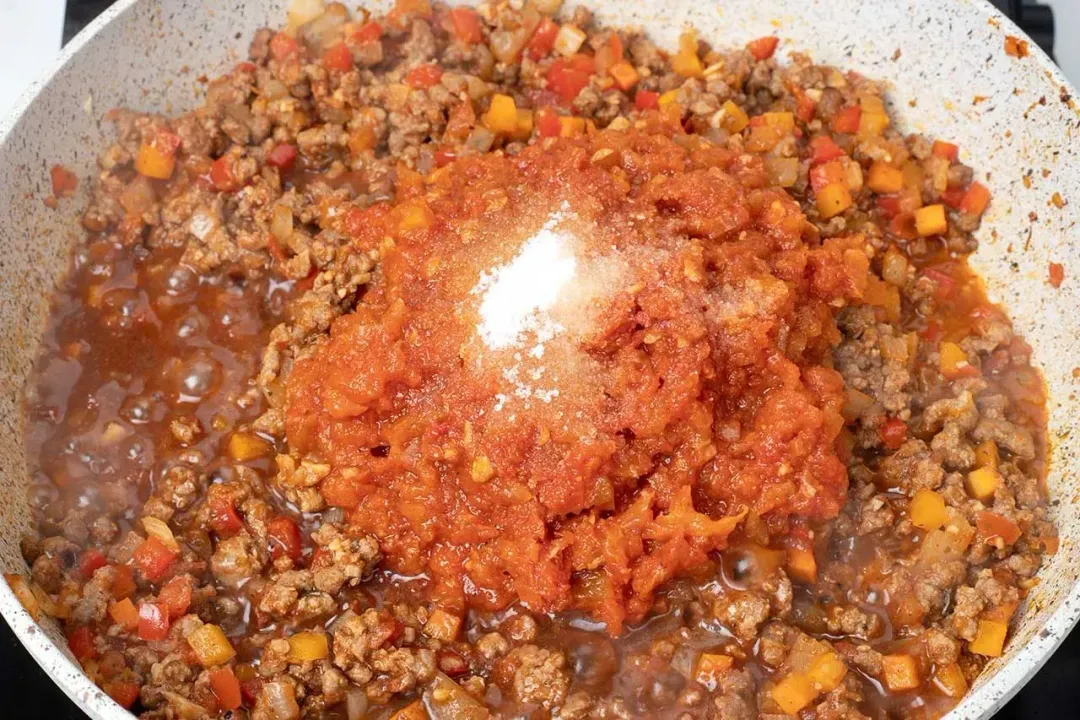
Cook the bolognese: Add the preserved 1 1/2 cup pasta water to the saucepan. Turn up the heat to high and bring to a boil. Once boiling, reduce the heat to medium and simmer for 15 minutes or until half of the water is reduced. Transfer to a bowl and set aside.
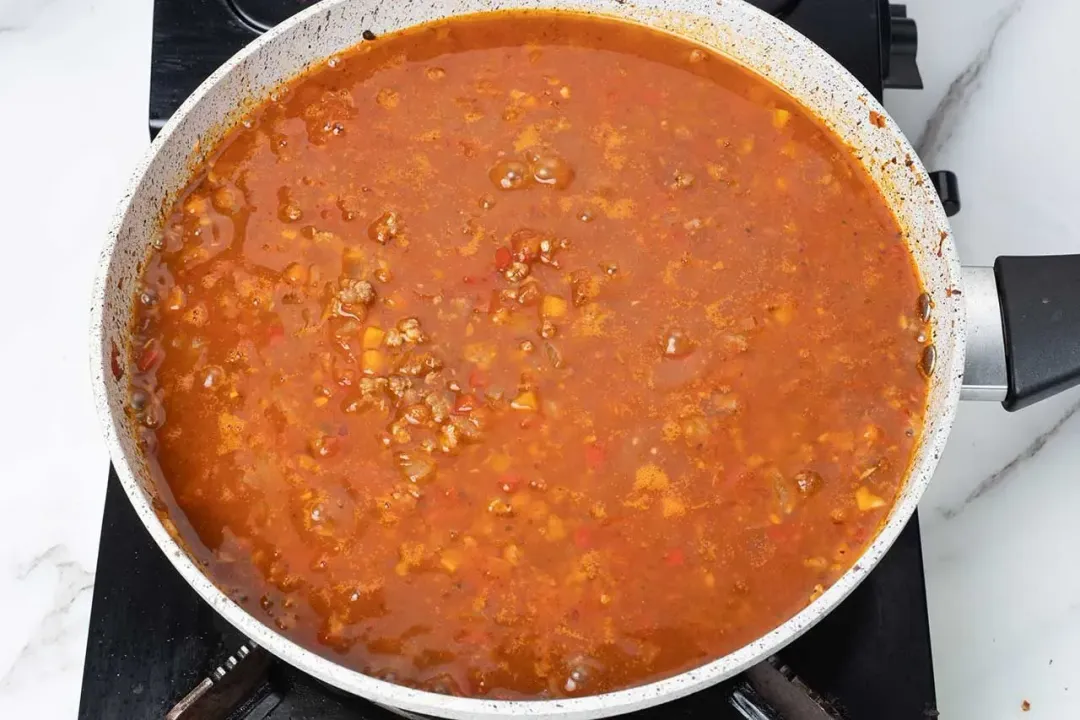
Make the white sauce (bechamel sauce): In a clean, small saucepan, add 2 tbsp unsalted butter and 2 tbsp flour. Whisk until the flour is dissolved. Continue to add 1 3/4 cup milk while whisking. Whisk constantly until the sauce thickens. Add the remaining 1/4 tsp salt and stir to combine. Turn off the heat and set aside.
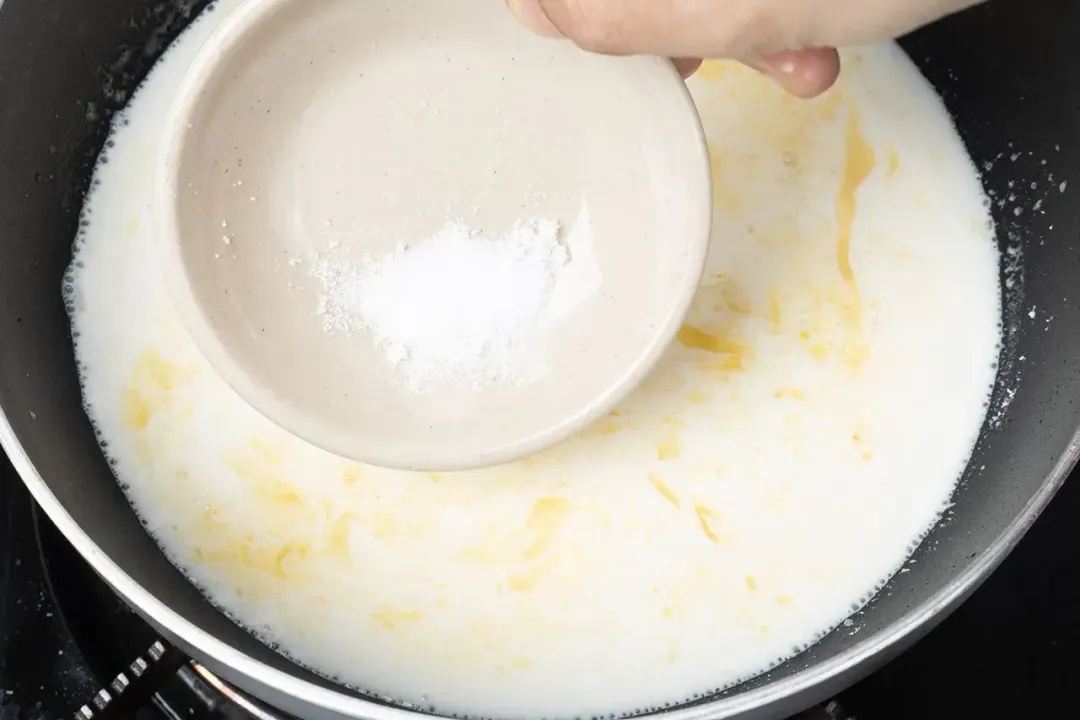
Assemble the lasagna: In a deep baking dish, spread a spoonful of the bolognese into the bottom of the dish. Continue to layer with the white sauce, lasagna sheet, another layer of bolognese, and finish it off with the white sauce.
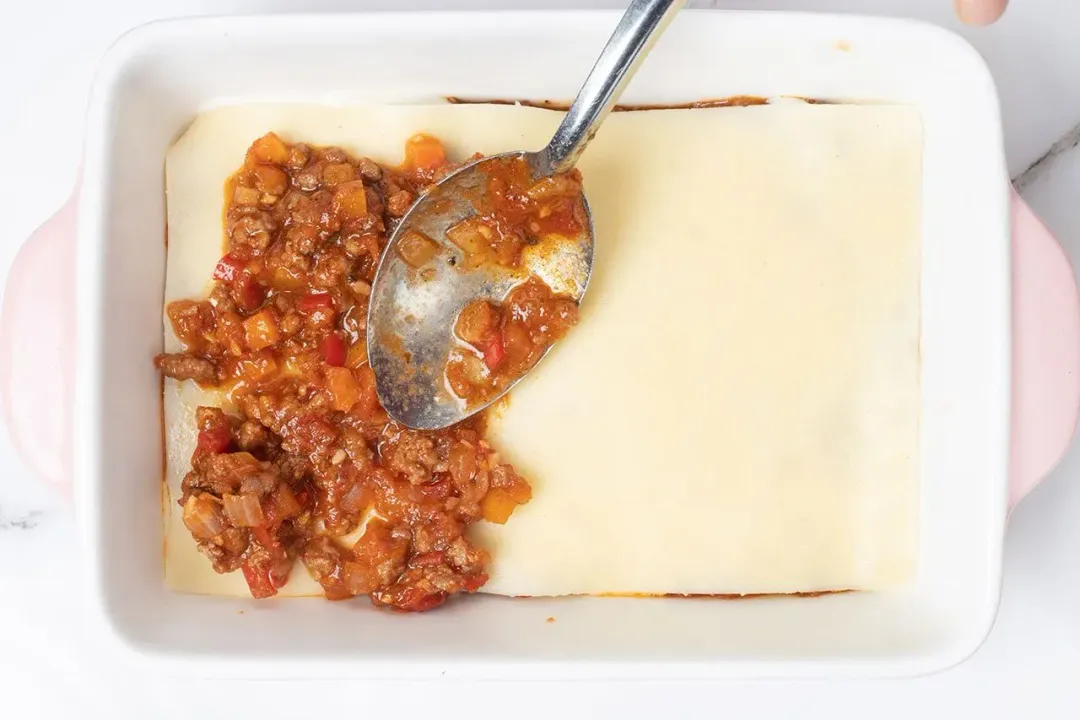
Bake the lasagna: Wrap the top of the lasagna with aluminum foil and bake in the middle of a preheated oven at 375°F for 20 minutes.
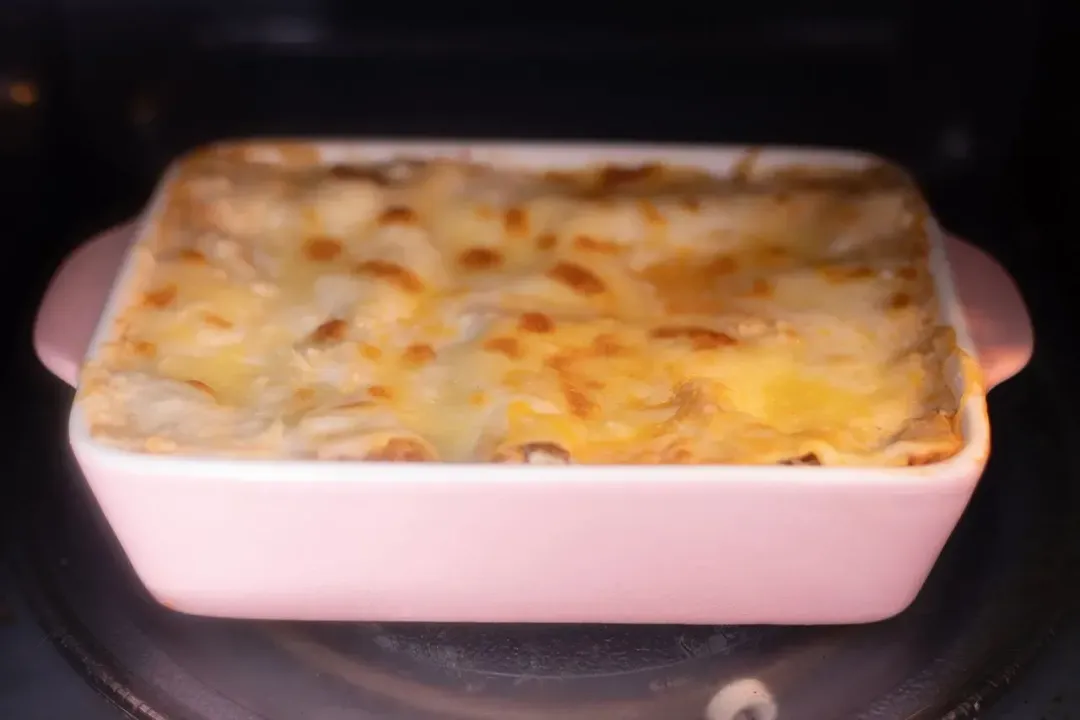
Add the cheese: Add 0.5 oz grated parmesan cheese and 1 oz shredded mozzarella on top of the lasagna. Bake again for 10 minutes at 425°F on the top rack.
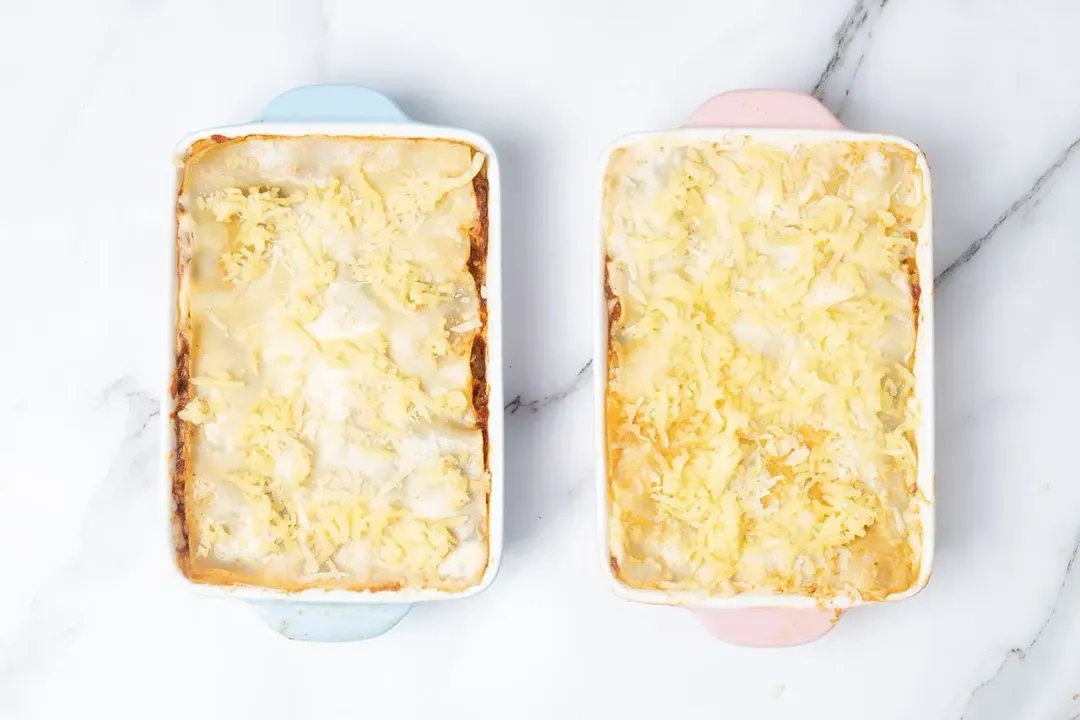
Serve: Remove the lasagna from the oven. Allow to cool at least 15 minutes before cutting into the lasagna. Transfer to serving plates, garnish with chopped parsley, and serve.
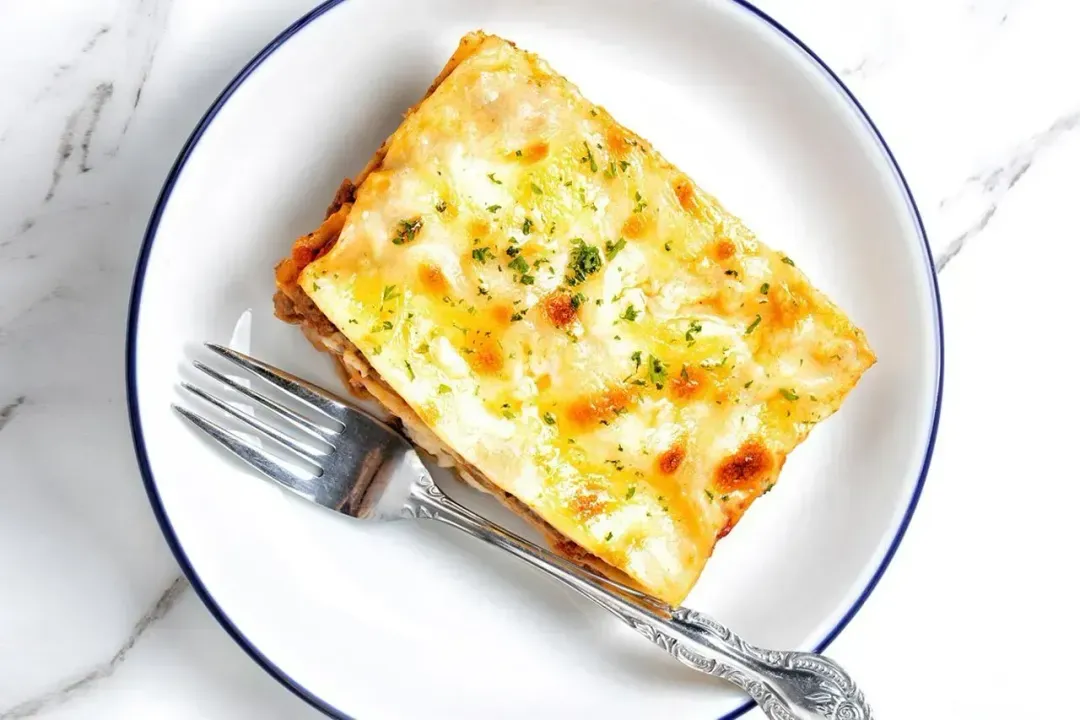
NUTRITION
Tuyet Pham
Head Chef, Culinary ConsultantLuna Regina
Writer, AuthorNatalie Butler, RD, LD
Nutrition Reviewer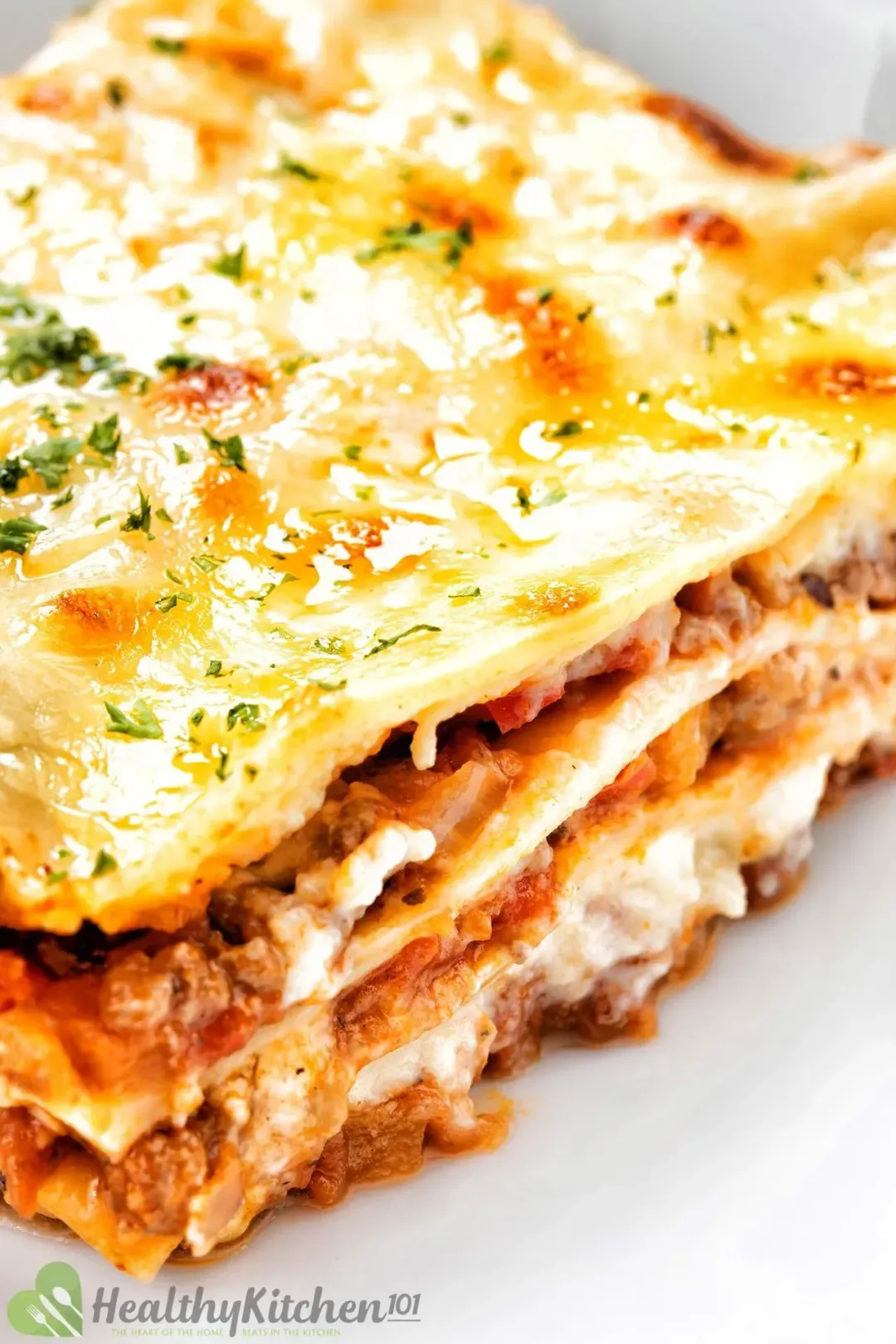
- Raymund
Wow, I would love to get a big serving of that
- Dennis Yannakos
This recipe makes one of the best lasagna I have ever tasted!
- ROSITA
I will try this Healthy lasagna recipe as soon as I gathered all the ingredients.
- Luna Regina
So glad you enjoyed it,Rosita!
